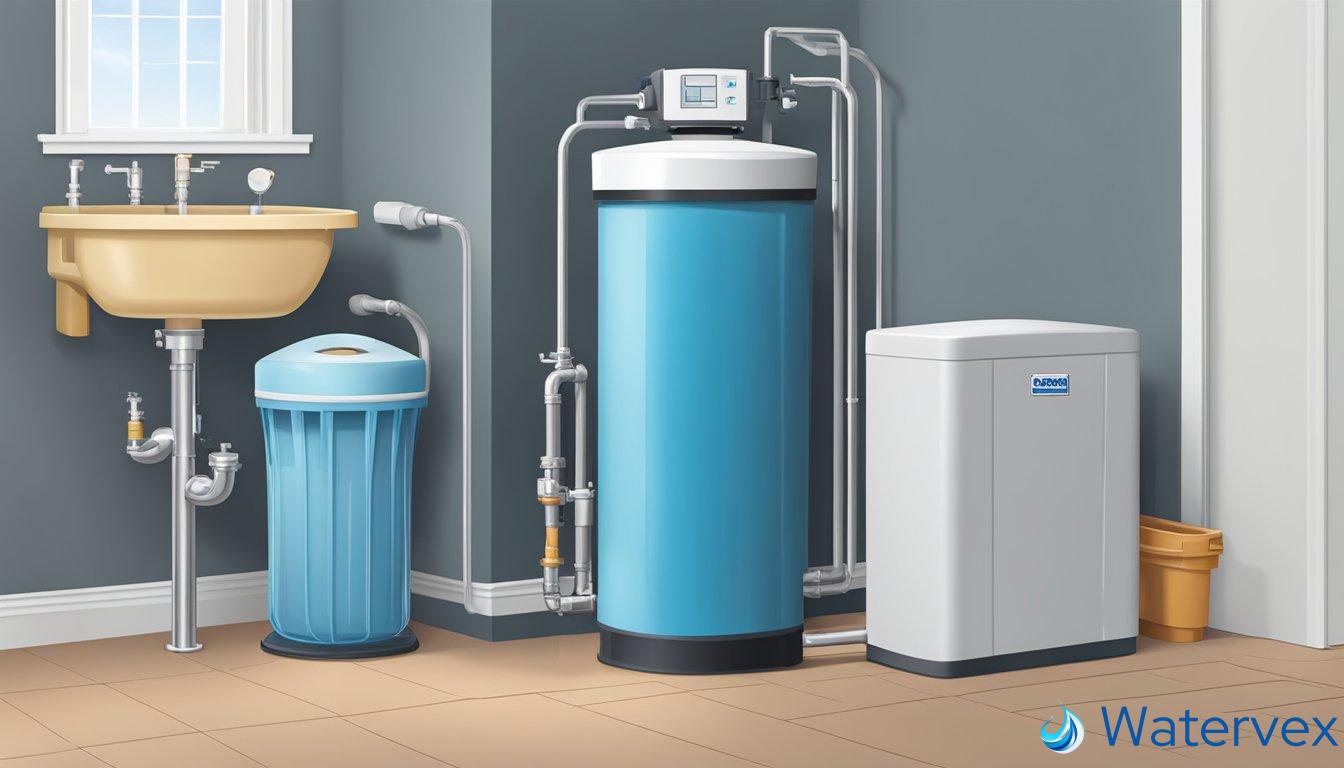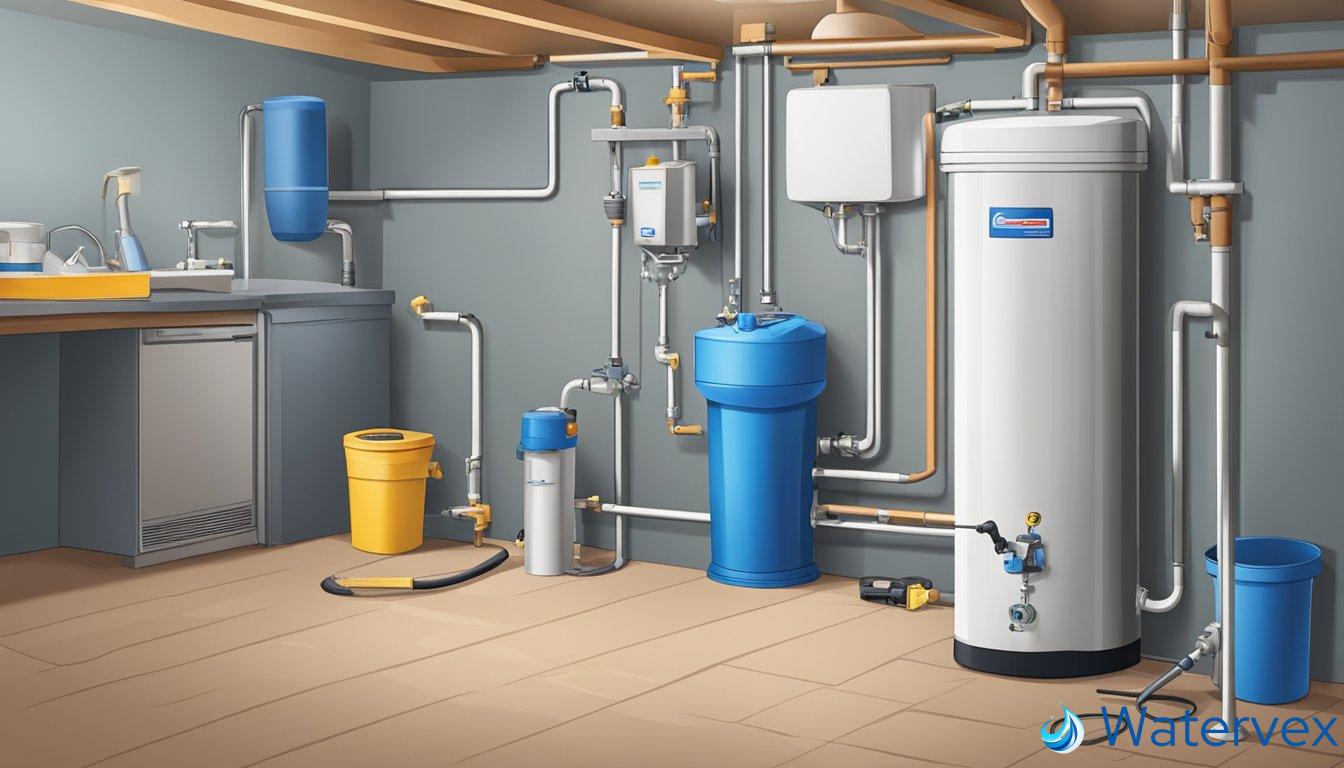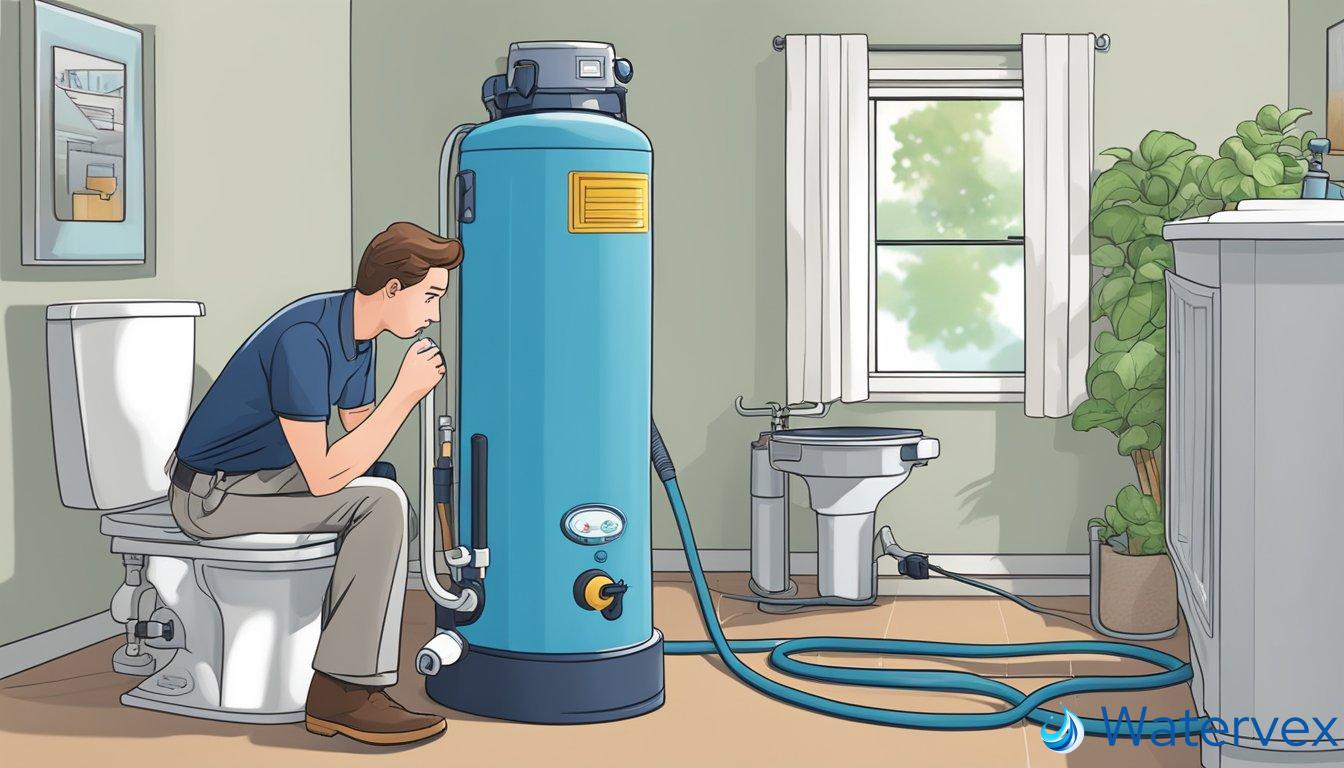When your water softener isn’t draining, it disrupts the entire process of turning hard water into soft, scale-free water for your home. The importance of maintaining a functional water softener cannot be overstated, as hard water can lead to scale buildup in pipes and appliances, reducing their lifespan and efficiency. If your water softener fails to drain, it’s crucial to address the issue promptly to ensure your system continues to remove the minerals that cause hard water.

Troubleshooting a non-draining water softener involves checking for common issues such as salt bridges, blockages in the lines, or problems with the brine tank. Understanding the mechanics of your water softener, from the water flow to the regeneration cycle, can help you identify the root cause of drainage problems. Additionally, ensuring that your system maintains optimal water pressure is essential for it to function correctly.
Key Takeaways
- Effective troubleshooting requires understanding the softener’s mechanics and checking for common issues.
- Identifying the cause of drainage problems can prevent scale buildup and maintain soft water quality.
- Timely intervention can keep the water softener operational and safeguard against hard water-related damage.
Why Isn’t My Water Softener Draining?
When your water softener isn’t draining, it can be due to a range of specific issues from blockages to mechanical malfunctions. This section will guide you through troubleshooting steps to identify and resolve these issues.
Identifying Common Causes for Drainage Problems
Blockages and mechanical faults are often at the heart of drainage issues with your water softener. Key areas to focus on include the brine tank, drain line, and resin tank.
- Brine Tank: Check for salt bridges—solid crusts that can form when salt levels are too high or due to high humidity in the storage area, preventing proper water flow. Troubleshooting salt bridges is a critical starting point.
- Resin Tank: Inspect for sediment build-up, which can affect the flow of water.
- Valve: Verify that the bypass valve is not engaged as it halts the water flow to and from the softener.
Inspecting Parts for Blockage or Malfunction
In a malfunctioning water softener, parts like the venturi, nozzle, and injector are common culprits. A clogged injector can prevent the unit from drawing brine, stopping the drain function.
- Venturi and Nozzle: Remove and inspect the venturi and nozzle for any sediment build-up; clean thoroughly if necessary.
- Injector: The injector screen may become clogged with debris. Check and clean the injector screen to ensure unobstructed operation.
Each part should be carefully disassembled following the manufacturer’s instructions. Proper tools and a gentle hand are essential to avoid damaging these components during the process. It’s possible to fix a flooded brine tank by cleaning these parts.
Remember, regular maintenance can help prevent many of these issues from occurring in the first place. Ensure any repairs are done with the correct replacements, and consider having spare parts on hand for quick fixes.
What Steps Can I Take to Troubleshoot the Drainage Issue?

If your water softener won’t drain, it can be due to various issues ranging from simple clogs to more complex mechanical failures. Here’s how you can troubleshoot and solve the problem effectively.
Performing a Manual Regeneration Cycle
To address a stuck regeneration or water that’s not draining properly, start by initiating a manual regeneration cycle. This can help clear any immediate blockages in the brine solution path and reset the system’s timers.
- Step 1: Locate the bypass switch on your water softener and enable it to stop water flow to the unit.
- Step 2: Press the regeneration button or turn the dial on your control valve to start a manual cycle.
Cleaning and Maintaining Components
Regular cleaning and maintenance are essential for preventing drainage problems. Ensure parts like the brine well, venturi assembly, and resin bed are clean, as mineral buildup can obstruct the flow of the brine solution.
- Method 1: Disassemble and clean the venturi assembly with fresh water and a mild cleaner if necessary.
- Method 2: Use a resin bed cleaner to dissolve minerals and organic compounds that might be affecting the system’s efficiency.
Adjusting Settings and Replacing Parts
Improper control settings or failed parts could lead to drainage issues. Check your timer and clock settings to make sure they align with your water usage pattern.
- Consideration 1: Adjust the regeneration frequency if your water in the brine tank level seems off.
- Consideration 2: If you suspect motor failure or a broken component, consult the manufacturer’s guide or a professional for replacement parts.
When Should I Call a Professional for My Non-Draining Softener?

Encountering a non-draining water softener can be a frustrating experience. While some issues can be simple to handle, like checking for power supply problems or small clogs, others may require a professional’s touch.
If your system is consistently failing to drain despite basic troubleshooting, it’s time to call in a professional repair service. Notably, you should reach out for help if:
- Your diy efforts don’t resolve the overflowing of the brine tank.
- You hear continuous water flowing, but no change happens in the softener’s behavior, hinting at an internal malfunction.
- There are no visible clogs or salt bridges that you can fix on your own.
- Checking the control valve or float levels does not highlight the issue.
A qualified technician will have the expertise to conduct comprehensive diagnostics, assessing potential damage beyond the surface level. They can handle complicated repairs and replacements that aren’t typically possible for a homeowner to manage. Periodic maintenance by a professional can also prevent issues from recurring.
A well-functioning system is vital for reducing mineral buildup and safeguarding the efficiency of your household appliances. So when faced with persistent water softener problems, such as non-draining, it’s prudent to consider professional intervention. Especially think about this if you:
- Value long-term solutions over quick, temporary fixes.
- Wish to ensure the safety of your home’s water quality.
- Aim to extend the life of your water softener system through proper service.
Remember, regular maintenance can often stave off these issues. If your system is older or has a history of problems, scheduling a service might be the wiser choice rather than waiting for a full malfunction.

